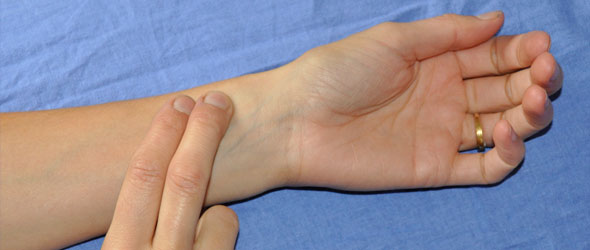The best thing any person exercising can do is monitor their pulse. Your pulse is a great source of information, often warning you when your body needs to take things easy. It is also a valuable source when training. As this is the beginners section, we shall not go too deeply into the training methods involved by utilising the pulse/heart rate. We shall provide you with a routine to keep check on your heart rate, with a morning routine as well as providing you with the knowledge to monitor your training effort in the future.
The accepted best time to take your pulse is in the morning, preferably not after the cat or dog has jumped on your chest. When you wake up the most common spot to reach for to measure your pulse is the artery on the thumb-side of the wrist. Touch this area lightly until you feel your pulse/heart beat. Count the amount of heart beats for 15 seconds and multiply by four – this will give you your daily pulse rate.
This pulse differs from person to person and is only an indicator of your resting pulse rate. The “normal” for men is 72 bpm (beats per minute) and for women it is 80 bpm, but rates 10 beats either side of those rates fall into the normal range.
Keep a record of your morning pulse rates in a log book which also details your training and how you felt during the sessions.
As you achieve a higher fitness your morning pulse rate is sure to drop.
See the articles for more on training using pulse monitors and pulse levels. The various highs and lows.
Training to improve Aerobic power utilising Heart Rate
More for the Beginner:
- How to start running with 10 easy steps
- Three rules for the new runner
- Warm up routine – gently does it
- Buying your first pair of running shoes
Author: Gavin Doyle





























Speak Your Mind